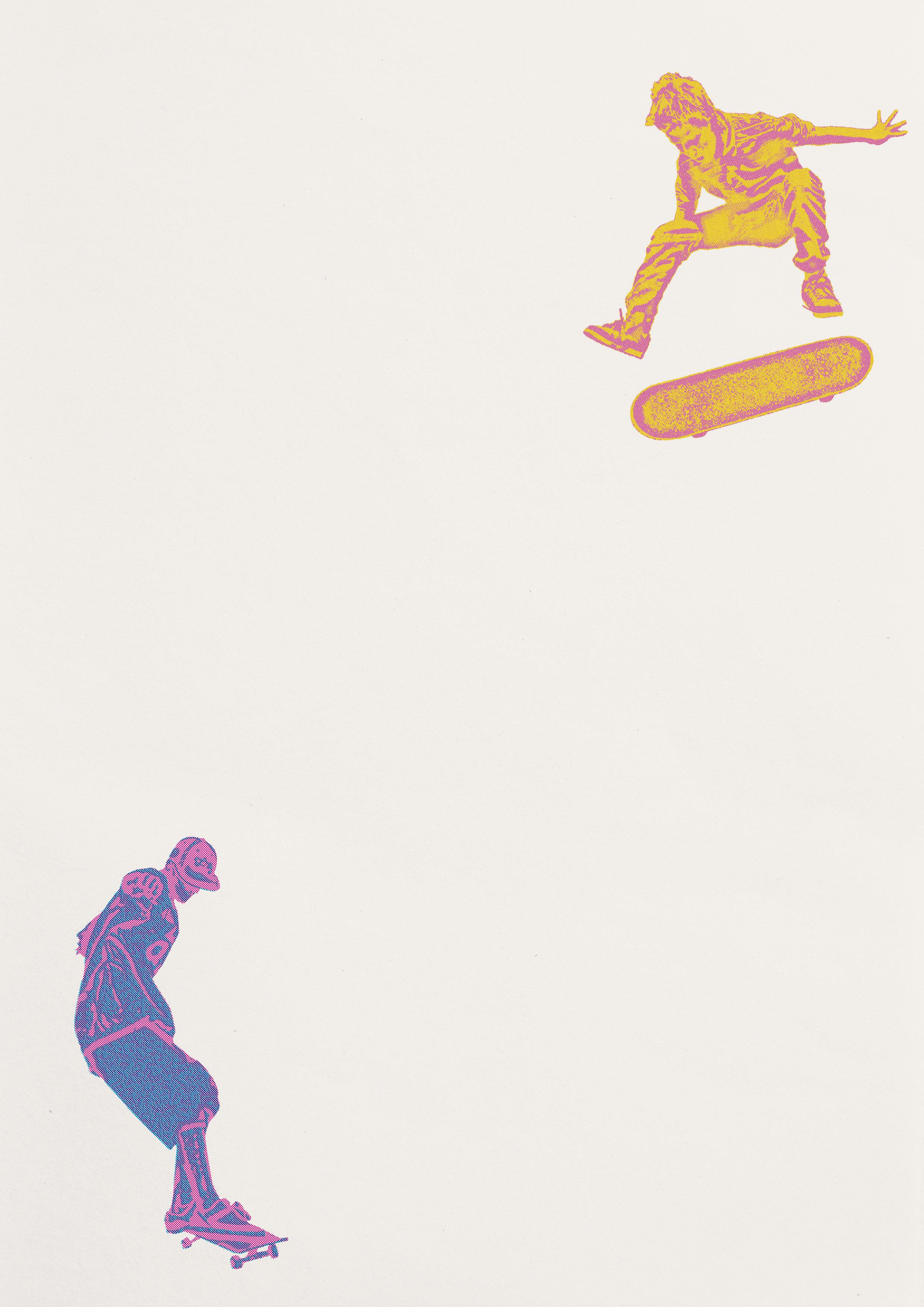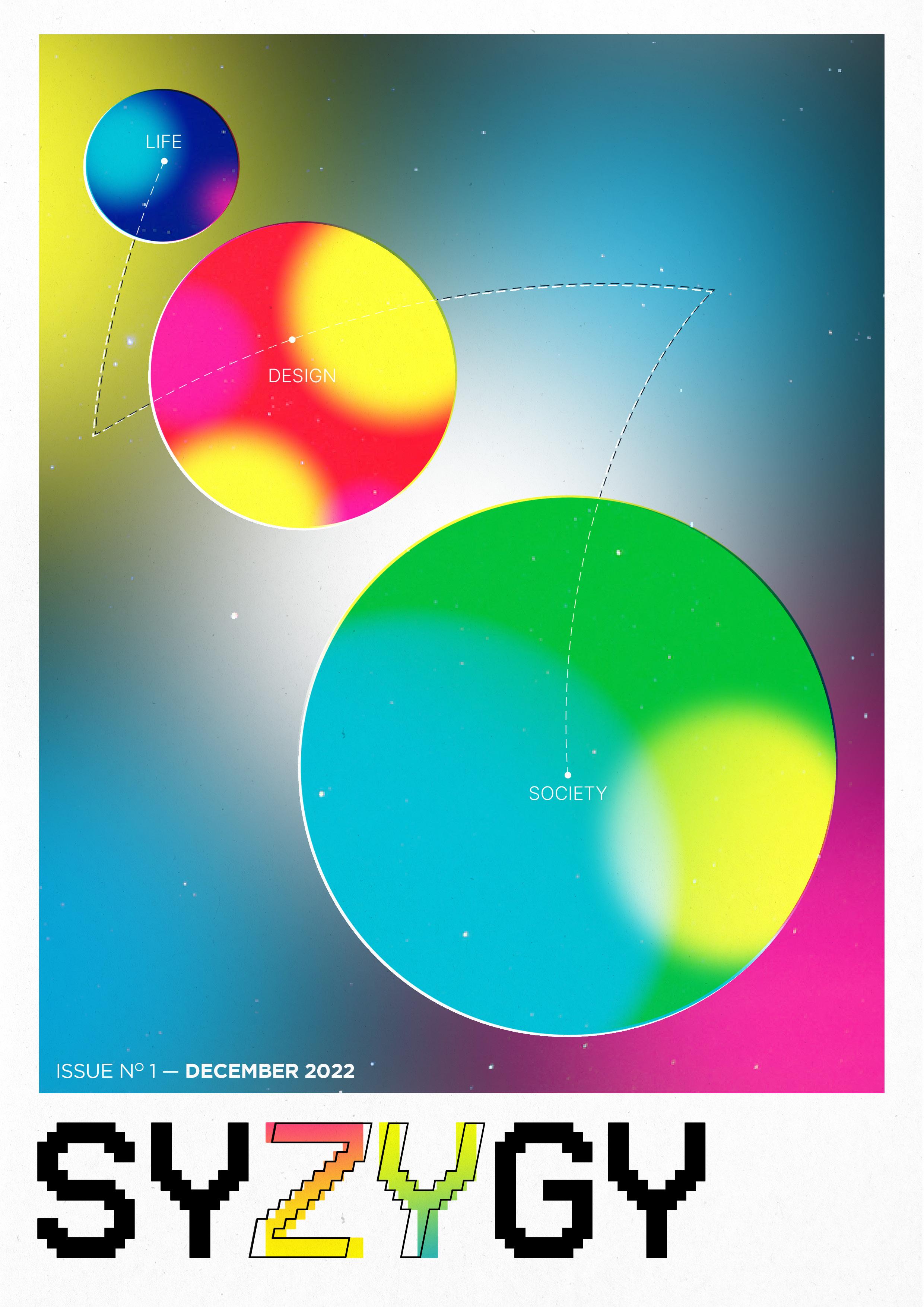

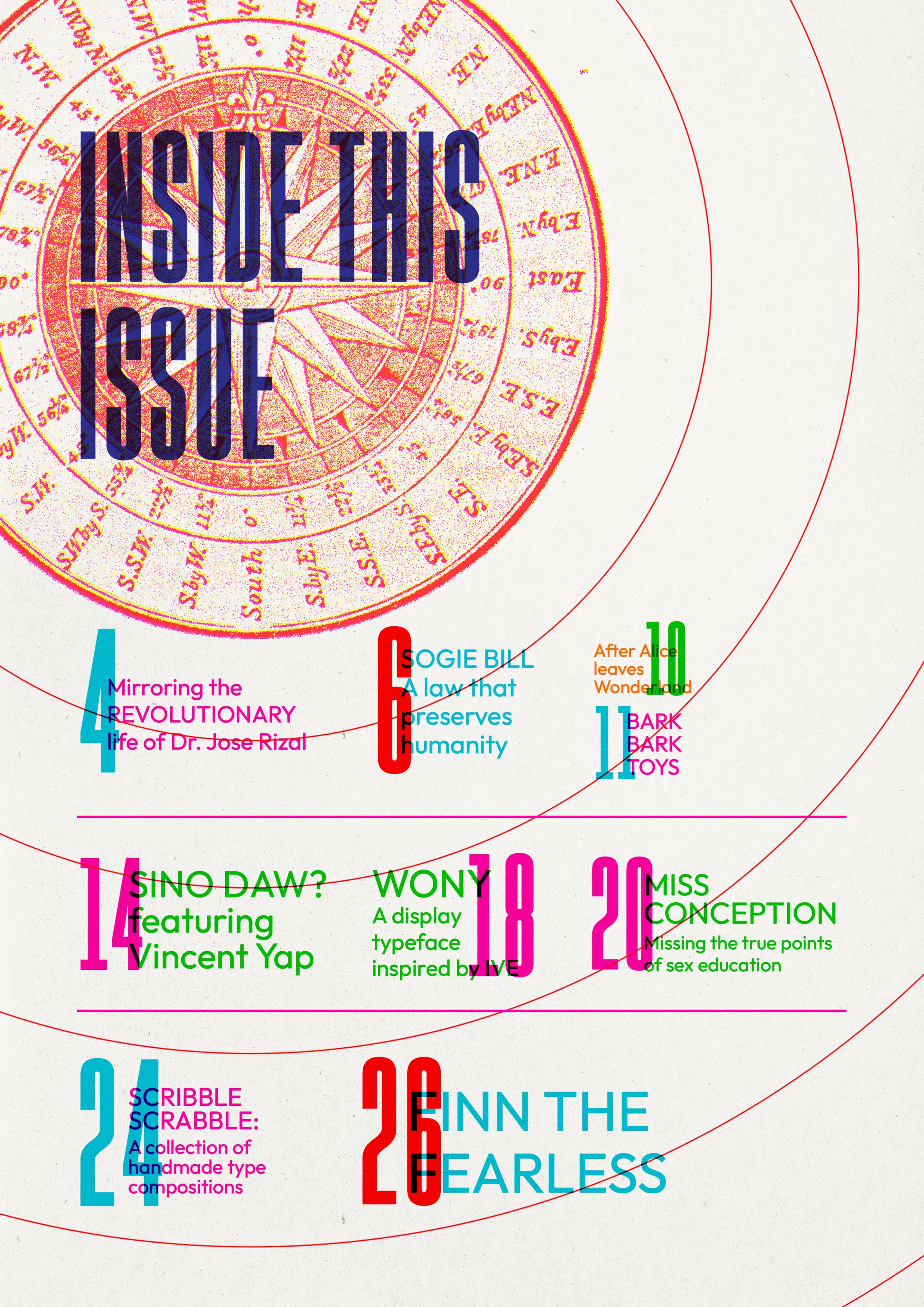




Have we traveled back in time to the Spanish Colonial Era—or did we never let go of their insatiable greed for power?
 Written by VINCENT YAP
Written by VINCENT YAP
One hundred sixty-one years ago, on June 19, 1861, a man who would become one of the faces of the Filipino people against Spanish colonization was born. Jose Protacio Rizal Mercado y Alonzo Realonda, who is more commonly known as Dr. Jose Rizal, is a writer and an activist whose works actively critiqued the Spanish colonial rule.

Dr. Jose Rizal’s status as a national hero is often debated. On one hand, his critics deem him irrelevant and outdated—that he should have been more like Andres Bonifacio who chose the militant and revolutionary path. On the other hand, his extensive credentials and patriotic efforts dedicated to the colonial Philippines prove to be praiseworthy and worth looking up to—he was a to-be and is to be a role model for the generations to come. In both cases, however, Bonifacio’s and Rizal’s efforts must always be appreciated as they found ways to ignite a fire within the Filipino people and pursue freedom. Worldwide, Rizal is celebrated for his pursuit of freedom and enlightenment, especially for the Filipino people who have been inhibited by the oppressive governments in the era of Spanish colonization.
His political philosophy has always been to champion freedom and enlightenment, which manifested in his written works, education, and contributions to society in his various professions. At a time when socio-political injustices reigned—institutions pandering to the Westerners, corruption prevailing, unjust killings, torture, and so on—Jose Rizal knew that the fortitude and valor of the Filipinos meant that freedom was approaching. These injustices also signified the weakness of the colonial government, that they were aware of the power that the masses held when they mobilized, which is why they were being silenced. In his own way, he wrote numerous articles and published various articles that criticized the government of the Spaniards due to his belief that a government must be for the people and by the people. This was a belief held by many of the ilustrados. These works included hopes of reform, which Rizal was also quite known for. He sought out reforms within the government for the Filipinos to become “partners” with the Spaniards so that they enjoy the same right and privileges (given that the Philippines was not ready to be independent at the time, based on his considerations). These
include representation in the Spanish Cortes, freedom of the press, secularization, more effective government personnel, and positions within the administration that are open for Filipinos to take on. In all of these, it is apparent that Jose Rizal hoped to achieve a more humane society.
As expected, this enraged the government officials and heightened the abuse against the Filipinos, which included exploitation, forced labor, silencing critiques, and slavery. Unfortunately, these instances are not ancient and are still exhibited by authoritarian governments threatened by democracy.
To mirror the political philosophies of Dr. Jose Rizal in contemporary Filipino society, it is inevitable to observe the colonialist culture and bureaucracy that the nation’s own government exhibits today. Numerous administrations have adhered to policies that are considered imperialist, self-serving, and elitist, such as the inaction of the Duterte administration towards the territorial disputes within the West Philippine Sea. In addition, with a large number of the service/resource providers being owned by government cronies (telecommunications, farms, electricity, etc.), the plain folk who subscribe to these services are only subjected to a larger scale of corruption. Injustice for the victims of extrajudicial killings and police brutality have also become more rampant. With the upcoming presidency of a Marcos scion, more misinformation, disinformation, and historical distortion are bound to be unleashed—instilling fear and fixed thinking
among the people. Given that these are a few of what may be considered the modern-day counterparts to the practices that the colonial government displayed, a similar response from contemporary reformists and revolutionaries may be expected.
Valor and fortitude both stand strong today, in a more unpleasant sense. These attributes are observed within the so-called Filipino Resiliency, a phenomenon that shows the strength of the common Filipino people amidst even the most trying times. However, this is because of the unreliability of those seated as leaders that the people are forced to turn to their neighbors for help instead of a corresponding official. Calls for social reforms are also high as ever, with the administrations addressing the ills of society through trivial solutions that hide the problem rather than solve it. In the modern age, we also see new forms of protests, ways of mobilizing, and invitations to orientations of reformist/ revolutionary groups. National democratic mass organizations (NDMOs or NatDems), together with fellow activists, mirror the acts of historical figures such as Jose Rizal, whose aspirations are all for the betterment of the nation, for the freedom and equality of each and every Filipino, for a more sustainable and progressive society. Colleges and universities are sources of enlightenment for students, just like Jose Rizal’s experiences in studying both locally and abroad. They are capable of producing people like Jose Rizal, whose advocacies leaned towards patriotism and freedom. We see these institutions produce publications initiated by students that are unafraid to criticize the failures of those in the higher points of society, even when they are threatened to be silenced by authorities. These actions taken by individuals represent the activism that the likes of Jose Rizal once displayed, that they put their words into action and fought against oppressive systems and that the political philosophies of Jose Rizal live on to develop into new fights that we must face. These actions are representative of the contemporary Filipino identity, full of valor and fortitude in hopes of seeing a changed nation with justice in its essence, humanity among its citizens, and strength in self-governance.

However, this is because of the unreliability of those seated as leaders that the people are forced to turn to their neighbors for help instead of a corresponding official.
In celebration of Pride Month, let us explore some parts of the realities of our fellowmen within the LGBTQ+ community. Even before the mainstream was ready to embrace LGBTQ+ people as valid and acceptable members of society, the LGBTQ+ community has existed longer than society recognizes. Eventually, civil rights movements and gay rights activists began surfacing on society, and later the media spectacle. Equal rights for LGBTQ people (lesbians, homosexuals [homosexual males], bisexuals, transgender people, and queer people); calls for the repeal of sodomy laws; and demands an end to discrimination against LGBTQ people in work, credit, housing, public places, and other aspects of life.

“Love should never mean having to live in fear.” - DaShanne Stokes
Thus, the SOGIE Equality Bill aims to implement the 1987 constitution’s rights, particularly the equal protection clause. It treats LGBTQ+ people as equals and ensures that their rights are safeguarded. The bill also recognizes the Philippines’ international obligations, particularly under the Universal Declaration of Human Rights. Everyone, regardless of their sexual orientation and gender identity, should be granted as much rights as those who aren’t a part of the LGBTQ+ community. No one’s identity or preference should be up for anyone’s critique regardless of the religious values or beliefs they uphold.
The paper will be putting emphasis on the points that are about to be discussed and rationalized as to why the implementation and significance of the SOGIE Bill shouldn’t even be debatable. The religious doctrines, social and gender expectations, and the stigma surrounding the LGBTQ+ community will be addressed.
The founder of Jesus Is Lord Church, Eddie Villanueva, presumably stated that the whole community should go through “mental, psychosocial, and emotional rehabilitation.” as if they are impaired by default because of who they are Lawyer Lyndon Cana claimed that the LGBTQ+ community are becoming more entitled and pretentious, as if simply fighting for their rights equate to wanting to become a “super special elite class”. This implies that simply protesting for basic human rights after being discriminated against for centuries put the entire community above others.
The most heinous misconception, in my own personal opinion, that the community is linked with is that necrophilia and pedophilia are mainly practiced and even endorsed by the members of the said community. These crimes should not be used to justify their discrimination, their identities, orientations and expressions should not be associated with these atrocities, their humanity should not be judged by who they love.
When the Quezon City government signed the country’s first local anti-discrimination ordinance (ADO), this enactment served as a pioneer for other local governments to implement their own ordinances to secure the LGBTQ Filipinos from discrimination. However, the ordinances could only go as far as making discrimination an offense and not all of them abided by the implementing rules and regulations (IRR). This diminishes the essence of their ordinances in the first place, which makes them ineffectual by practice.
The local ordinances could only protect 20 million Filipinos from discrimination, which leaves the rest from other regions without these ordinances still susceptible to it. As stated by Senator Risa Hontiveros “With a law, there is behavioral change that is expected at the societal level. Making discrimination a crime and not just a local offense is a strong human rights measure that will ensure people of diverse SOGIE will be protected, their rights respected, their aspirations of equality, realized.”

The general consensus surrounding the Filipinos’ attitudes towards the LGBTQ+
community shows that we have not progressed enough to fully accept the members of this community, as our society is only tolerant but not welcoming of them. This is not only applied in social, interpersonal settings, but in the corporate world as well. This is detrimental to these people making a living, as our culture is still adhering to limiting and outdated traditional ideals.
As stated by Cogencia CEO Paulo Edrosolano, “It is not correct to say that companies are [tolerant]. We’re far from that, I think we should completely erase that mindset that the Philippines accepts LGBTQIA+. The data says otherwise.”. This is supported by the result that only 11 out of 17 companies explicitly use the terms “sexual orientation”, “gender identity”, and gender expression when presenting their anti-discrimination policies.
The companies from the BPO sector, which, more often than not, foreignheadquartered, are the ones containing SOGIE-inclusive, non discriminatory policy. No Philippines-based companies were recorded to have SOGIE-inclusive policies, but more than half of them are uninterested in considering establishing SOGIE-based anti-discrimination policies. No Filipino members who work for local companies are granted any rights or protection in the workplace, they have to lean on companies under the foreign sector, whose policies fall short because they weren’t explicit enough to express that their anti-discrimination policies also means SOGIE inclusivity among their environment as well
“
Everyone, regardless of their sexual orientation and gender identity, should be granted as much rights as those who aren’t a part of the LGBTQ+ community. No one’s identity or preference should be up for anyone’s critique regardless of the religious values or beliefs they uphold.
The restricting, traditional and heteronormative ideals are still embedded in Filipino culture, which are initially instigated by patriarchal religious beliefs. This sadly and effectively does impede our society’s way to progress, which does not only harm the LGBTQ+ members in social settings. The prejudice against them oppresses them by systemic design. This affects their overall living, and in the midst of striving for survival, they are condemned and vilified. Feeding ourselves with more information, listening to the voices of activists, and allying with them do equate to us fighting for fundamental human rights.
Everyone should have the same rights as individuals who aren’t members of the LGBTQ+ community, regardless of their sexual orientation or gender identity. Regardless of what religious ideals or views they have, no one’s identity or preference should be subjected to condemnation or even criticism. This is warranted by religion, which is the first, if not, the main factor of their oppression due to initial correlation of the church and the state. While the separation of the church and the state has hopes of being halted, there are still ways to go in order to fully eradicate the still-relevant issues faced by the LGBTQ+ community.
Let them make a living and roam around without being confronted with endless mockery, harassment, and inequality. Let them live, dream and love as freely as those who are not within their community. Being tolerant of the maltreatment they face does equal the ones who are committing violence against them, refusing to extend your hand with love and compassion to them means fully turning your back on the most foundational human rights. Let us always choose to have empathy and humanity in our fellowmen, so equality binds us with love as a whole.
Bilon, X. J., & De Leon, C. (2018, June 25). With no national law, can we rely on local ordinances to protect LGBTQs against discrimination? CNN Philippines Life. https://www.cnnphilippines.com/life/ culture/2018/06/25/antidiscrimination-billlgbtq.html
Casal, C. (2018, November 14). Survey finds that Filipino companies are not accepting of LGBTQ+. CNN Philippines Life. https://www. cnnphilippines.com/life/culture/2018/11/14/ Filipino-companies-not-accepting-LGBTQ. html
CNN Philippines Life Staff. (2020, November 5). 11 articles to understand why the SOGIE bill is important. CNN Philippines Life. https://www.cnnphilippines.com/life/ culture/2020/11/5/understanding-SOGIEbill-importance.html
Deslate, A. F. (2020, May 19). The SOGIE Equality Bill. DivinaLaw. https://www. divinalaw.com/news-and-updates/sogieequality-bill/
Martirez, J. R. (2020, December 18). Terrible misconceptions: Why we need the Sogie Equality Bill. INQUIRER.net. https:// opinion.inquirer.net/136224/terriblemisconceptions-why-we-need-the-sogieequality-bill

Being tolerant of the maltreatment they face does equal the ones who are committing violence against them, refusing to extend your hand with love and compassion to them means fully turning your back on the most foundational human rights.
Being tolerant of the maltreatment they face does equal the ones who are committing violence against them, refusing to extend your hand with love and compassion to them means fully turning your back on the most foundational human rights.
”

A transcript of a podcast discussing the risks in using augmented & virtual realities.
Written by VINCENT YAPIn 1965, Ivan Sutherland envisioned what he called the “Ultimate Display,” an idea that generated a realistic yet virtual render of objects and humans, appearing as if they were really present in real life, in real time. He described it as a display programmed to take us into a semi-real semi-virtual world, much like “the Wonderland into which Alice walked.” (Virtual Reality Society, 2017).

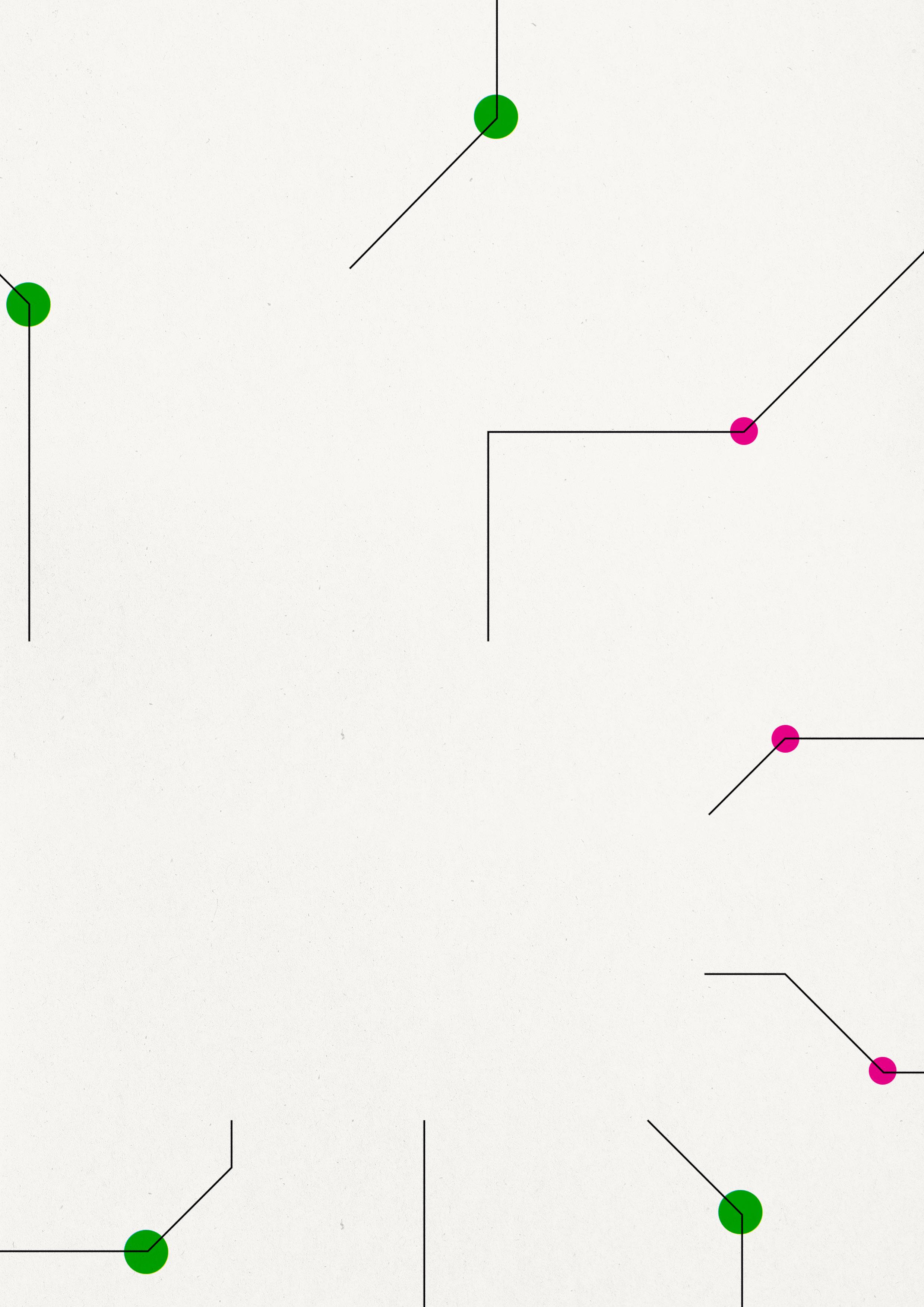
While the continuous development of AR/ VR devices certainly brings about new opportunities in different fields, it also raises questions about its negative effects on privacy, health, and safety. I am Vincent Yap, and here are my thoughts on the risks of AR/ VR in our society.
Ellysa Dick notes that these devices pose additional privacy concerns due to the diversity of technologies involved, the amount they acquire, and the fact that the data is what allows the devices to operate. AR/VR systems capture a large amount of biometric data, which may be used to identify people and infer further information.
Physical and mental health are also concerns regarding the advancement and reliance of people on AR/VR. The heavy headset puts a strain on neck and shoulder muscles as said by Oregon State University. Forbes brings up the use of AR/VR technology and an escape from legitimate reality. Apart from physical strain, the attachments that people develop to the internet devices—such as AR face filters— can distort their perception of their own appearances.
Popular VR games such as Pokemon Go also started being acknowledged for the dangers of AR/VR inventions. Roy cites examples of people being too immersed in the experience that they lose sense of actual reality. Researchers in Tippecanoe County, Indiana, linked the game to 134 vehicle accidents, two of which were deadly. While unintentional, the nature of immersive experiences does contribute to the lack of awareness of our surroundings

It is estimated that more than 1 million eligible cats and dogs are euthanized around the world each year, simply because too many pets end up in shelters and too few people consider adopting them when looking for pets.
Written by VINCE PATRICK ROSALES
Do not stress because Bark Bark Toys are here to accept them! We will accept any broken dog toys to give to dogs who want to play with them.
Taking care of four big dogs who have the biggest energy when it comes to playing with their toys was a huge factor as to how Bark Bark Toys came to be. They were able to break their chew toys very quickly and would leave them anywhere they wanted and would not touch them anymore. After a long afternoon, I entered my home to see all their chew toys broken and left everywhere, it was a sight for eyesore. The toys were not even completely
broken, it would usually just be broken in half. As I was about to throw them away, I realized that there are stray dogs out there who might want these toys. This is how Bark Bark Toys came to be.
That one afternoon along with my passion for taking care of dogs was enough to convince myself to start a shelter for homeless dogs who, I believe deserve a chance to have fun. Going around the neighborhood I would notice skinny homeless dogs walking around or cramp in a corner. Their only goal was to find somewhere to hide and look for scraps of garbage to feast on. This made me very upset. I knew that if I were to make this shelter for dogs I would want them to be in an open area where they can run with other dogs and play with toys. I wanted to bring back the light in their eyes and make sure that they will be taken care of.

Finding an area to build up our Dog shelter was another problem we had to face, but luckily it did not take that long to find an area. Surprisingly the area was within the village I was living in. We called the lot owner and asked to

buy it, with that the process of building up our shelter commenced. I knew that in this shelter we would advertise how we accept any broken dog toys dog owners have, clean them, and give them to the dogs for adoption in the shelter. This would not only benefit the dogs it would also benefit with lessening waste. Instead of throwing away dog toys, we would take them in. We believe that the dogs here in Bark Bark Toys would love your donations broken or not. We will be focusing on bringing back the joyful lives of these homeless dogs should have in the first place.
With that being said I hope that you continue to support and donate to Bark Bark Toys as we will be taking care of dogs for families who are looking into getting a dog in their lives.
Who is he—what’s he like? After 19 years on earth, he still isn’t sure.
Written and Visuals by VINCENT YAP
He’s indecisive! He’s procrastinating! He’s cramming! He’s Vincent Ryan Yap of AB Multimedia Arts trying to get through another hectic trimester in college! That’s unfortunately the lingering thought in the 19 year-old’s head.

Vincent Ryan Yap, who is often referred to as either of his given names (may or may not prefer Ryan, just a guess), finds himself along Taft Avenue most of the time tagging his trusty Champion tote and blue Klean Kanteen along. A large part of his identity is attached to graphic design—his primary medium, his specialty, his partner-in-crime. So much so that he was unexpectedly awarded the Best Layout Artist award for his work in the Benildean Press Corps during the Green Harvest & Thanksgiving celebration held by the Student Publications Unit of the College. Arguably, Korean pop music also takes up a significant part of his identity.
Outside of his work though, he is generally described to be quite outgoing and friendly by his friends, two traits that he refuses to identify himself with. From his point of view, shy and insecure are more fitting words.
Maybe they’re all true though, and that they just show during certain interactions. He hopes to develop and improve on the earlier two attributes during his college years though, which is definitely a struggle especially at a time where a large part of our lives proceed remotely.
It is undeniable that your existence as a student is a dominant part of your identity, mainly because you spend a good chunk of your formative years being one. That’s the case for Ryan, who cannot define himself without using the words “graphic designer,” “illustrator,” and “student.” For as long as he could remember, art is something that he is able to do. Maybe not perfectly, but he is capable of drawing more than just stick figures and disorienting scribbles. Many of his classmates would assign him to do the creative parts of every project, drawing and coloring being his main contribution. He talks about this like things have changed drastically since then.
They may have, a bit. From illustrations, his work now primarily revolves around graphic design (take a shot every time graphic design is mentioned). It took quite a while for him to settle on design as his specialty, especially after a long break from the arts and design field. But as soon as he did, they soon became inseperable. Ryan commonly worked as a graphic designer/layout artist in organizations, including the Benildean Press Corps, The Animo, and DLSU-M SHS Commission on Student Elections
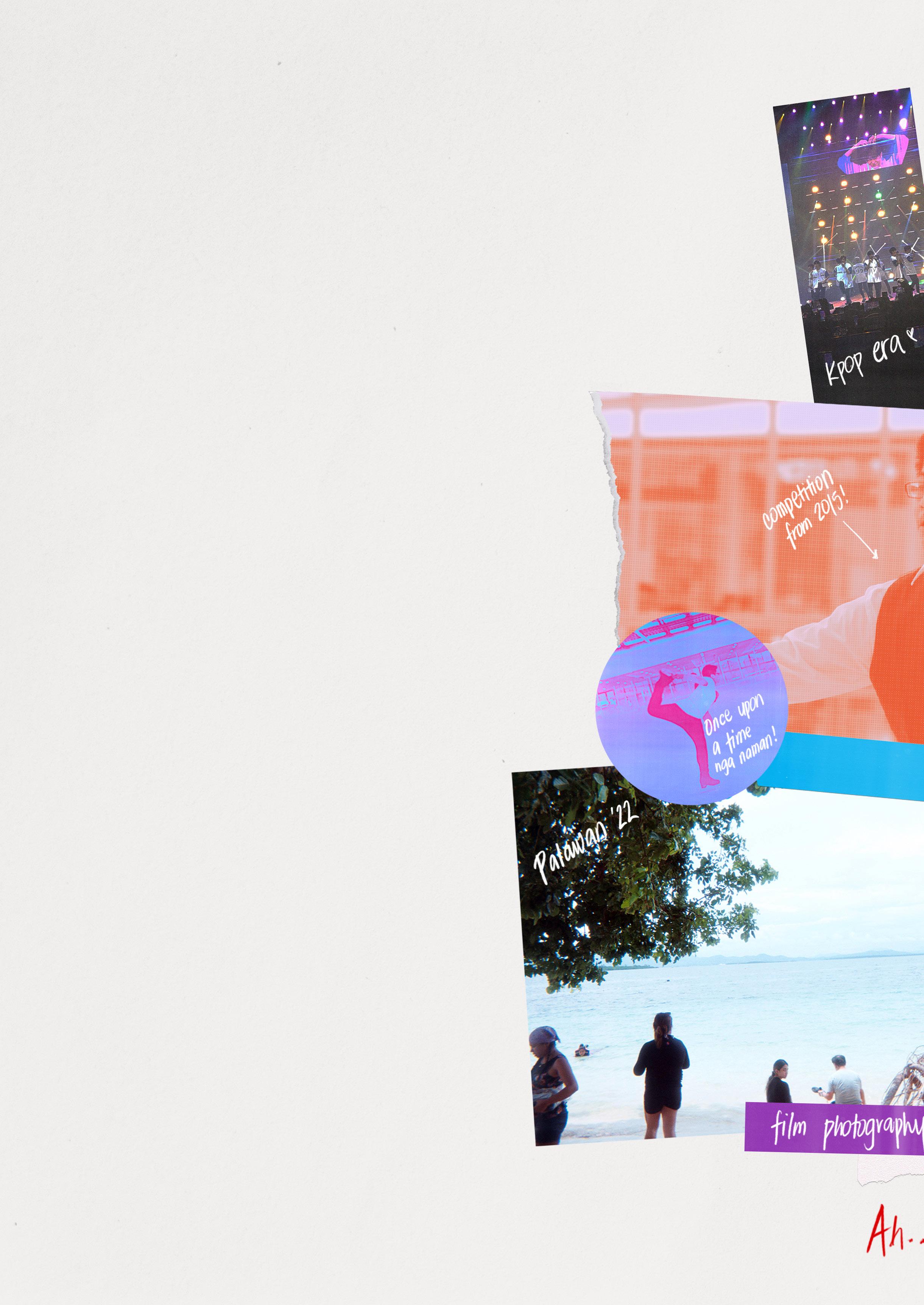
Who would Ryan be without school? Well, he was very interested in a few activities that kept him working; functioning like a regular human being. Two contenders go up against each other for being the most impactful ones in his life: figure skating and K-pop. His interest in these started way back when he was in his early elementary years, finding both of them in an unexpected manner. From 2014 to 2018, he was a figure skater whose home rink was in SM Megamall. While 2014 was the year he officially enrolled in figure skating lessons, he actually started recreationally skating laps around the ice two years earlier. It was only after Michael Christian Martinez’ stint in Sochi that Ryan found the courage to ask his parents to get him a coach. He did not achieve much throughout his time as one though, mostly because of him being a late starter and only went to lessons/practice once a week. By early 2018, he felt that skating was quite a lost cause for him due to the lack of progress and time for practice. So, he officially hung up his skates for good. Does he regret it? Maybe
Ryan’s fascination with Sandara Park as a toddler brought him into the world of K-pop when she debuted as a member of 2NE1. Starting out only as a casual listener of their debut album, he then began discovering other groups thanks to our favorite music video channel MYX. “Your choice, your music” the channel said. While he technically had no choice to send in requests as a 6-year old, the music videos they played on multiple programs were definitely his music. Soon after, he had multiple CDs burned with songs from the 2nd generation groups like SHINee, Girls Generation, KARA, Super Junior, and SS501 to name a few. He even went so far as to attending his first concert in 2011, 2NE1: The Party in Manila. Fast forward to 2016,
when he rediscovered his love for Hallyu after a short break, Ryan’s fascination with K-pop was taken to new heights especially because he was now a teenager with an allowance. Admittedly, he somewhat regrets spending a shit ton of money on official merchandise of the artists he liked, mostly because he ended up forgetting them after awhile. He also had tons of memories made because of K-pop, such as high-fiving with the idols themselves, taking a photo with them, a first mosh pit experience, and even working as a graphic designer for the Philippine fanbase of The Boyz. Undoubtedly, being a fan of the genre has given him an experience of a lifetime.
Excluding art and design, figure skating, and K-pop, there is not much left to his identity. Ryan admits that he is quite the generic person, and likes trying out new things just for the sake of doing so. Of course, trying new things also involves traveling to different places, which he incredibly adores. He also likes people and objects that give off an artsy vibe, one that would say “Hey! I’m an art student.” That includes analog film photography, printmaking, and collages. Of course, these are just things that make him happy at the end of the day. From there, he excitedly yet nervously anticipates what the future holds for him.
It took quite a while for him to settle on design as his specialty, especially after a long break from the arts and design field. But as soon as he did, they soon became inseperable.




WWony is a sans serif display typeface inspired by the “chaebol crush” concept of the K-pop girl group IVE. The typeface found its roots in the group’s discography, known for their sophisticated, alluring, yet confident interpretations.

The varying widths of the regular font capture the elegance and intricacies of the group’s music videos. A spark is incorporated into numerous glyphs to emulate the charming points of the group’s personalities. Altogether, the typeface does not only appear glamorous and chic, but also undaunted and confident.
Ideally, this typeface is intended for decorative use only, perfect for posters, titles, and headings.

This project was the first functioning typeface designed by me. The early phases of this project started after another ritzy glitzy release from the six-piece Korean girl group IVE After Like. Coming from the Love Dive hype (when I would listen to the song about twice an hour minimum), I was all eyes on them waiting for another iconic track to be released. Once they released After Like, I was instantly hooked after the first listen. The comeback turned out to be another cosmic success for them, especially after sampling Gloria Gaynor’s I Will Survive as a dance break instrumental.
With my intense fondness for IVE’s 2022 releases, I knew I had to include them as one of my 10 Inspirations for my type. At the time though, all I knew about the project was that I wanted it to turn out to be elegant and glamorous, much like their chaebol-crush concept (as Wonyoung describes it). Chaebol
“ ”
is defined to be a large-scale Korean industrial conglomerate owned by either an individual or a family. Albeit my lack of knowledge on type design, I wanted it to look complicated.
In its earliest forms
I went into the project with no original idea whatsoever. Initially, I only had the After Like and Love Dive album covers as inspiration for my type, but the outcome would not be so original now, would it? I used the visuals and set designs from their music videos, as well as information from their interviews to generate ideas to present in class.
The studies initially presented to the professor were disapproved and were described as too similar. I had to generate three new ideas that are vastly different from each other. One aspect they all shared though was a sparkle icon in the bowls of every letter, saying something along the
lines of “find me charming once I confess to you” or “you must know that I’m trying to attract you.” This idea was taken from a NYLON Magazine interview with IVE, wherein Rei notes that the song talks about “expressing your feelings not only with your heart but through your actions as well...”
From there, I played with the possible letter forms while keeping the charming, glamourous, and bold aspects in each study.



The primary challenge throughout the entire working process was constructing each glyph on Adobe Illustrator. The construction of the typeface included varying widths at certain points of the glyphs, which posed a difficulty since adding too many points will make the output appear rocky and uneven. IVE is the total opposite of that. Tinkering
with the simplify and smooth tool helped though, by an insane amount.
Glyphr Studio was another challenge, with all the unfamiliar tools that came with it. Random anchor points, gaps, and distortions would appear every time I imported an SVG version of the glyph into the software. I did get used to working around these challenges though, without a solid solution.
All these challenges, including the crunched timeline we had, only reduced the quality of my output to a minor extent. Maybe I’d find a certain point out of place, or an uneven area on the glyph. But you really wouldn’t notice unless you zoom in on it directly. Am I happy about it? Yes, I’d say, considering the experience and knowledge I have on type design. I still want to play with the forms and refine them once I have the time so that I could share it online and have it available for public download.
Initial sketches made for Wony, presented as studies to be approved by our Typography & Layout (MMTYPOG) professor.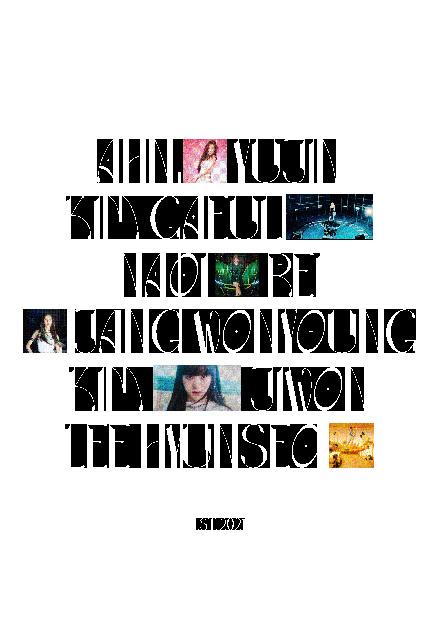
Reliable and progressive sex education is hard to attain in many countries up until today. The reason for this is due to the social stigma that it holds (especially in conservative countries), together with other misinformed ideas that are still considered taboo. In general, openly discussing the topic of anything sexual is still considered taboo in fact.
In 2020, the HIV.gov agency (managed by the U.S. Government) estimated that around 37.7 million people were HIV-positive. HIV is commonly transmitted through the exchange of bodily fluids (blood, semen, etc.), which makes sexual contact a primary catalyst. With good sex education, STDs, unwanted pregnancies, and abuse can be prevented
Comprehensive sex education is often inaccessible, especially in conservative countries. With that, people rely on hearsays, untrue information, and other non-factual ideas from unqualified sources. The education attained with these come from consuming sexual content from the internet and oversimplified ideas, which then become common knowledge after hearing them over and over again (Chandra-Mouli).
With that, a zine revolving around the pandemic of poor sex education was seen to be a relevant idea. The reasons for that are (1) Sex is a commonly overlooked topic, especially in conservative nations. As such, they do not learn about having healthy sexual relations and practices (2) Sex as a subject is heavily stigmatized, to the point that naming and talking about mere body parts (when not viewed in a sexual manner—especially with women’s bodies) are to be avoided. And (3) There are a lot of misconceptions when it comes to teaching sex education
Dadaism is known to be a style of satire and criticism. As the zine revolves around the misconceptions on sex education, the essence of Dada can be used to criticize the longestablished misconceptions on sex education and its objectives. Dada integrates the everyday objects used in contemporary life, as seen in the collages for the first three pages of the zine.
The Philippines as a conservative country is guilty of perpetuating these misconceptions. These perceptions are considered old and backwards. The use of vintage Filipino packaging possesses the aspects of conservativism and oldness. Old Filipino graphic design is also heavily influenced by the artistic styles of our colonizers which brought these ideas into the Philippines in the first place, which is why the style was applied to the latter three pages of the zine.

Euphemisms are used to cover up the real anatomical terms of our genitalia. This page takes on a satirical form of a biology quiz—with a focus on erogenous zones to emphasize the need to destigmatize mere body parts.



Another misconception of sex education is that it encourages the youth into engaging in sex, which is not the case. The page uses a fast-moving watch, with hand signs that symbolize sex, and a speeding car to show this misconception.


Abstinence is also said not to be promoted by sex education, which actually is not true since abstinenceonly programs are ineffective. The page satirical shows the idea of abstaining as the best form of contraception—which is unfortunately still taught to students.


This page takes inspiration from a wellknown local match brand named Royal. The idea for this design is that it responds to the first misconception that naming genitals are bad by asking the viewers to teach children the right names.





This page also responds to the 2nd misconception that sex education encourages sex, but research has shown that it does not and actually helps delay or reduce sexual activity among students. The design takes inspiration from Presto Funwich, a defunct ice cream sandwich brand from the Philippines.


This page focuses on the misconception that condoms are not effective. Oftentimes, people take the idea of using condoms as useless due to their personal experiences with them. However, there are certain instructions on how to actually use them—which are taught in comprehensive sex education.



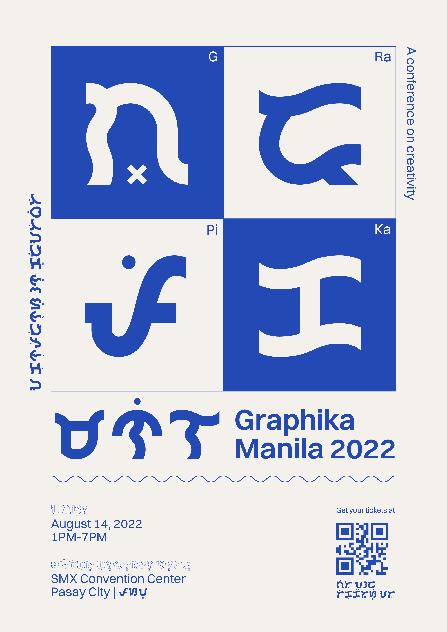


Various handmade type compositions made throughout the term, including the initial sketches of the typeface inspired by the Visiona II exhibit.


Finn finds himself at the skate park again, only to face a challenge bigger than the highest ramp available.
Written by VINCENT YAPRead the full script here:
FADE IN:

EXT. STANLEY SKATEBOARD PARK — MORNING
FINN happily walks towards the iron gate entrance of the skateboard park and takes a glance at the people inside.
Across the entrance, MILO railslides along the handrail creating sparks from the friction.
FINN (slowly, fascinated, eyes widening)
Wow. One day, I’m going to be an amazing skater just like Milo and take everybody’s breath away.
FINN follows MILO’S skating with his eyes, then runs at a distance towards him. MILO reaches the end of the handrail and falls, scratching his knee.
FINN (CONT’D) (softly, gulping in fear) Or not.
MILO realizes he was being watched by FINN and approaches him.
MILO (happily)
Hey, Finn! Why don’t you show me what you can do on that skateboard of yours? Maybe we can work on your skills together! Come on!
FINN blushes and his hands tremble as he holds his board up. They both walk towards the bowls and ramps under the shade.
